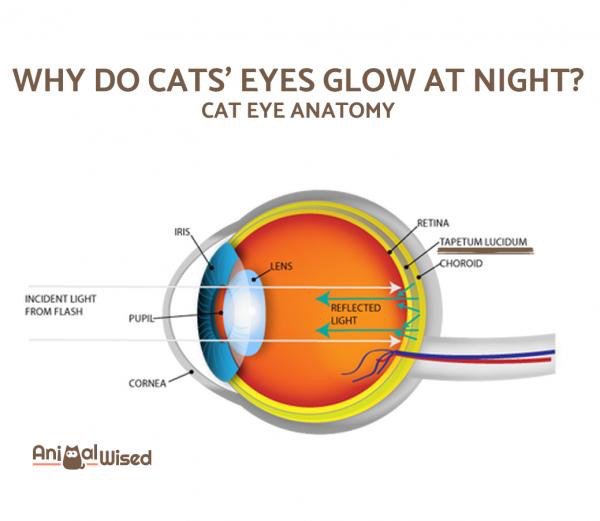-
Asked by anon-220323 on 20 Jun 2019.0
-
Kate Timms answered on 20 Jun 2019: last edited 20 Jun 2019 10:47 am
Great question! We all have different kinds of eyes. They evolved differently to suit the different needs of different species. For example, predators are really good at picking out small details. Prey are really good at spotting movement like an approaching predator.
Animals that go out at night or might be hunted at night tend to have a reflective surface (known as the tapetum lucidum) behind their retinas in their eyes. This helps them see int he dark as it acts as a mirror, bouncing the small amount of light back at the photoreceptor cells so that they are hit with more light than they would be otherwise. This helps them see in low amounts of light.
It also means that it looks like their eyes are glowing when we shine a light on them because the mirrors in their eyes are reflecting it back at us!
You can see how this work below!

-
-
Marianne King answered on 20 Jun 2019:
Because cats are evil and the evil shines out from their eyes in the dark. I’m joking I love cats. Kate’s answer is much better than mine. 🙂
-
-
Kaitlin Wade answered on 20 Jun 2019:
Probs shouldn’t be shining lights into a cow’s, sheep’s and cat’s eyes but yeah Kate’s answer is awesome 🙂
-
Nina Rzechorzek answered on 21 Jun 2019:
The vascular tunic of the eye consists of three major structures: the choroid, ciliary body, and iris which are all highly pigmented and have a rich blood supply. The choroid serves a nutritive function for ocular tissue; it consists of the outer loose connective tissue with numerous blood vessels and melanocytes. Melanocytes produce the pigment melanin and prevent light that escapes past the retina from being reflected back into the retina, where it would blur the image. The “eye-shine” that occurs at night when light enters the eye is caused by the tapetum lucidum (L. tapetum carpet, lucidum bright) in the choroid. The tapetum lucidum covers an area of approximately 30% of the fundus dorsal to the optic disk; it has a rounded triangle shape with its base oriented horizontally and the apex directed dorsally. The tapetum lucidum reflects light that has passed through the photoreceptor cells. This light-reflective surface enhances dark-adapted vision under dim light; however, scattering of light in the retina may affect sharpness of an image. The red-eye effect in photography is the common appearance of red pupils when using a photographic flash close to the camera. The red-eye effect appears in animals that have no tapetum lucidum (such as humans) and rarely in animals with a tapetum lucidum. The main cause of the red colour is the rich vasculature (blood supply) in the choroid, which lies behind the retina. Blood absorbs light at 600 nm, and the amount of red light emerging from the pupil depends on the amount of melanin in the choroid.
Hope that helps!

Comments